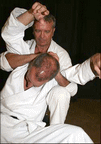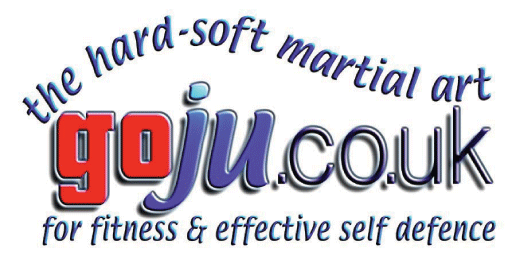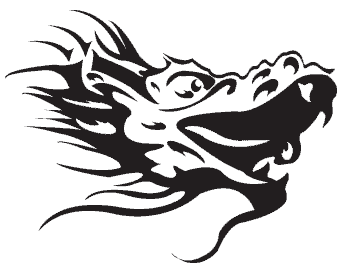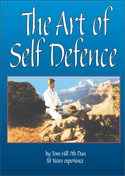Seiunchin Kata
('Attack, conquer, suppress; also referred to as 'To control and pull into battle' or 'To grab & pull in battle' and 'Marching far quietly')
To develop energy and vitality is
called Chi Kung or 'Energy Work'
in Japanese it is Kiko. Chi or Ki is
the life force energy that is linked
to the breath, blood and
circulation. Martial Ki is
not just one thing but a synthesis of many connections; Mind, body, breath for example.
Qualities required to study the martial way:
The intention of the spirit
The concentration of the mind
The discipline of the body.
The several stages of developing
Ju, Chi, Ki or Internal power:
• Mental control - correct thinking
• Emotional control - correct feeling
• Conducting energy
• Abdominal Centering
• Muscle relaxation,
extension & contraction
• Correct body,
bone & joint alignment
• Correct angular delivery
• Whole body awareness
• Body conditioning
• External awareness
• Breath control
& manipulation
This kata is known as Seinchin, Seiyunchin Seiyonchin or Seianchin in Okinawan dialect. The correct pronunciation of this kata in Fujian dialect is Chaiinchin. Both Tokashiki and Kinjo believe that Chaiinchin is derived from the fighting movements of the hawk with emphasis on the movements of the wings and talons. Although extremely rare, hawk boxing is still practiced in some areas of Fuzhou and on the island of Taiwan.
The hawk is also one of the ten original animals incorporated into the internal system of Xing-I-Quan. Two movements in Chaiinchin are characteristic of hawk boxing. The first is the opening movement of the kata in which the hands are extended outward, the body lowered into a shiko-dachi and the body turned to a forty-five degree angle. This movement is meant to represent the hawk extending its wings before engaging its prey. The second movement found in Chaiinchin which is characteristic of the hawk, is the hooking grab and nukite. This movement is thought to be the talons as they grab and tear its prey.
Seiunchin's origin may lie in the internal system of Wu-shu, Hsing-I.(Hsing I is one of the three internal Taoist arts, the other two being Ba Gau and Tai Chi.) Seiunchin's translation through time has been lost, but many Goju-ryu Karateka refer to it as 'Marching far quietly'.
Seiunchin is a unique kata because only hand techniques are used, there is no kicking in this kata. One of the main purposes of the kata is to develop a strong and stable stance. Without a strong stance it is difficult to develop full power in your techniques. As an advanced kata, Seiunchin works a lot on the shiko dachi and incorporates strikes such as the back fist (uraken) and elbow (hiji ate or enpi). Along with Seisan, Seiunchin is the other training Kaishu of Meibukan Goju-ryu, which is suits a smaller man with less physical power.
Techniques are performed with the other hand used as an augmentation or re-enforcement! Within the kata there are many pulling and throwing techniques for close combat and grappling.
In the advanced levels of Goju the 'White crane technique' of vibration is utilized to deliver multiple attacks in one action. Generating vibrating power requires abdominal breathing control linked to spasms of the diaphragm. This force should then pass through bones, joints and muscles to the strike. Special breathing and Ki exercises are required to understand the vibrating or shaking power of the White crane.
Within the kata Seiunchin are locks, blocks, strikes, throws, holds, traps and strangles. The important part of the kata is how the internal energy and mechanisms are used to manifest in the external techniques.



Warning:
If you perform any technique shown here in class or in public, you do so at your own risk.
We assume no responsibility for the use or misuse of the information provided which results in injury or loss.
Copyright: Tom Hill 2012 Goju.co.uk All rights reserved.
UPDATED 1st AUG 2020


































